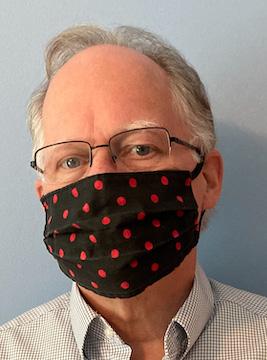
2 minute read
From the Director
The Return of the Mask
Stay tuned for more on masks from our collection throughout the Fall on our social media (Facebook/Instagram)
Advertisement
The ingenuity of mask makers and the incredible variety of mask designs produced during the COVID-19 pandemic is nothing short of amazing. When it became apparent that face coverings helped slow the spread of the coronavirus, crafters all across the world began turning out custom designs.
Masks have been a part of human culture from the beginning. MUAM possesses a wonderful range of funerary masks in its permanent collection, from ancient Egypt to pre-classic Mexico.
Masks in American culture frequently have negative connotations, such as associations with bank heists and muggings. In popular culture, masks obscure the identity of the individual--think of the Lone Ranger, Zorro, the Phantom of the Opera. Masks worn at a costume ball both conceal and reveal one’s identity and character.
In Asian traditions, think of Japanese Noh and Kabuki, Chinese quick-change magicians, Thai Ramakien, masks are used to tell stories and pass down ageless cultural norms. In contemporary Asia, protective masks have been a part of everyday life for decades.
Most Americans now recognize that wearing a mask saves lives, shows respect for others in our society, and has even become a fashion statement.
In the Cincinnati area, members of the wardrobe department of the Cincinnati ballet went from making tutus to producing protective face masks. Proceeds from the sale of these innovative and colorful coverings help support the artists while live performances are on hold. Sew Masks 4 Cincy (SM4C) grew up to coordinate local production of face masks, both for sale and for distribution to frontline workers. https://sewmasks4cincy.org/
Several several mask vendors can be found at Oxford’s uptown Farmer’s Market on Saturday mornings. Using designs from artwork created by individuals living with dementia, Opening Minds Through Art (OMA) at Miami University is offering colorful masks on their website via tinyurl.com/omamerch.
One neighbor has been making masks with a transparent mouth panel to allow individuals with hearing loss to read the lips of the speaker. Another friend is making animal-faced masks to complement his natural history lectures and presentations.
When the pandemic is behind us, I think we will have found new ways of showing we cared for others--when we wore masks in public; when we joined a sewing group to produce masks for our teachers and other frontline workers; and when we supported a local organization by purchasing one of their custom designs. That is one thing I will remember.
Robert S. Wicks, Director Miami University Art Museum & Museums Miami











